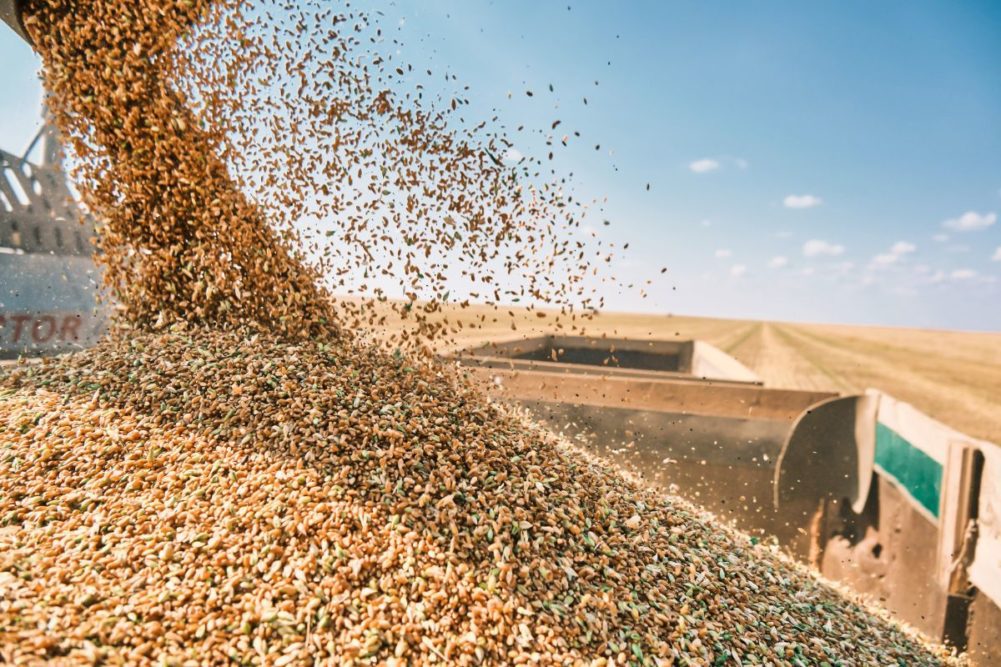ASTANA – Kazakhstan hosted Agricom, an international grain conference focused on grain production, development, export, and import in Astana on Sept. 25.

Photo credit: world-grain.com
Experts from Kazakhstan and global grain markets discussed the state of the industry and provided recommendations for businesses and government agencies on developing Kazakhstan’s grain sector.
Market trends and projections
The grain industry is the country’s largest agricultural sector, providing the most jobs, export volume, and attracting the most investment.
According to Yerbol Yeseneev, the deputy chairman of the National Chamber of Entrepreneurs Atameken, this year has been challenging for the sector, and it is essential to address the steps the government should take to support the industry.
“The key issue is the delay in harvesting. So far, about 50-60% of the crops have been harvested nationwide due to late planting. Despite the high yield, there are challenges with transporting and storing the grain,” he said.
According to Eldala.kz, Yevgeniy Karabanov, head of the Kazakhstan Grain Union’s analytical committee, shared projections for this agricultural season, estimating a total crop yield of 27.7 million tons for grains, oilseeds, and legumes — the highest in six years.

Yevgeniy Karabanov, head of the Kazakhstan Grain Union’s analytical committee. Photo credit: eldala.kz
“We are forecasting a soft wheat yield of 16.8 million tons after processing, with grain exports projected at 6.1 million tons, and 8.9 million tons if including flour in grain equivalent. Flour exports are expected to exceed 1.8 million tons this year,” said Karabanov.
Experts also highlighted durum wheat, noting that last year’s poor weather impacted the crop, reducing exports from 526,100 tons to 350,000 tons. This decline was also influenced by Türkiye’s shift from an importer to an exporter of durum wheat.
This year’s crop is forecasted at 728,000 tons, with expected exports of 460,000 tons, primarily to Europe. Tair Batalov, head of the Agrofidelity, a trading company, noted that while the quality of Kazakhstan’s durum wheat is decent, a significant portion is of average quality. Canada and Russia are expected to see large durum wheat harvests, adding to market competition.
Efficient logistics
Subsidizing transportation costs could allow Kazakh durum wheat to compete with Turkish and Canadian exports, experts said.
Since the beginning of the year, 582 grain trains have been dispatched, with 551 delivering cargo to China, Turkmenistan, Iran, Russia, and Uzbekistan, according to Kazakhstan Temir Zholy’s (KTZ) press service. Rail transport of grain reached 5.4 million tons, with 4.2 million tons exported and 1.2 million tons transported domestically, a 4% increase from 2023.
Grain product transportation via the KTZ network increased by 17.4% to 2.3 million tons, with exports up 20% to 1.8 million tons and domestic shipments up 9% to 500,000 tons. Grain exports to China have grown 5.7 times over the past three years.
Grain sector challenges
This year, most of the wheat crop is not expected to exceed Class 4 quality due to low specific weight and gluten content, a result of insufficient heat and late summer rains.
Alexander Malov, head of the Kazakhstan Grain Union’s trade committee, predicted gluten levels would not exceed 27%, with only about 1.5 million tons meeting this standard.
While falling number issues are minimal so far, the quality of the harvest remains uncertain. The limited supply of high-quality wheat has already pushed prices higher, with offers for wheat with 27-28% gluten content reaching 110,000 tenge per ton, compared to 80,000 tenge for standard Class 3 wheat.
Wheat prices are expected to rise further due to several fundamental factors, including the situation in the Russian market, which strongly impacts Kazakhstan.
“Russian wheat is currently undervalued due to political factors. However, Russia’s grain exports remain active, driven by low prices,” said Karabanov.
Ukraine is also actively exporting, with its reserves quickly depleting.
Experts recommend holding onto grain in anticipation of better market conditions as international prices begin to rise.


